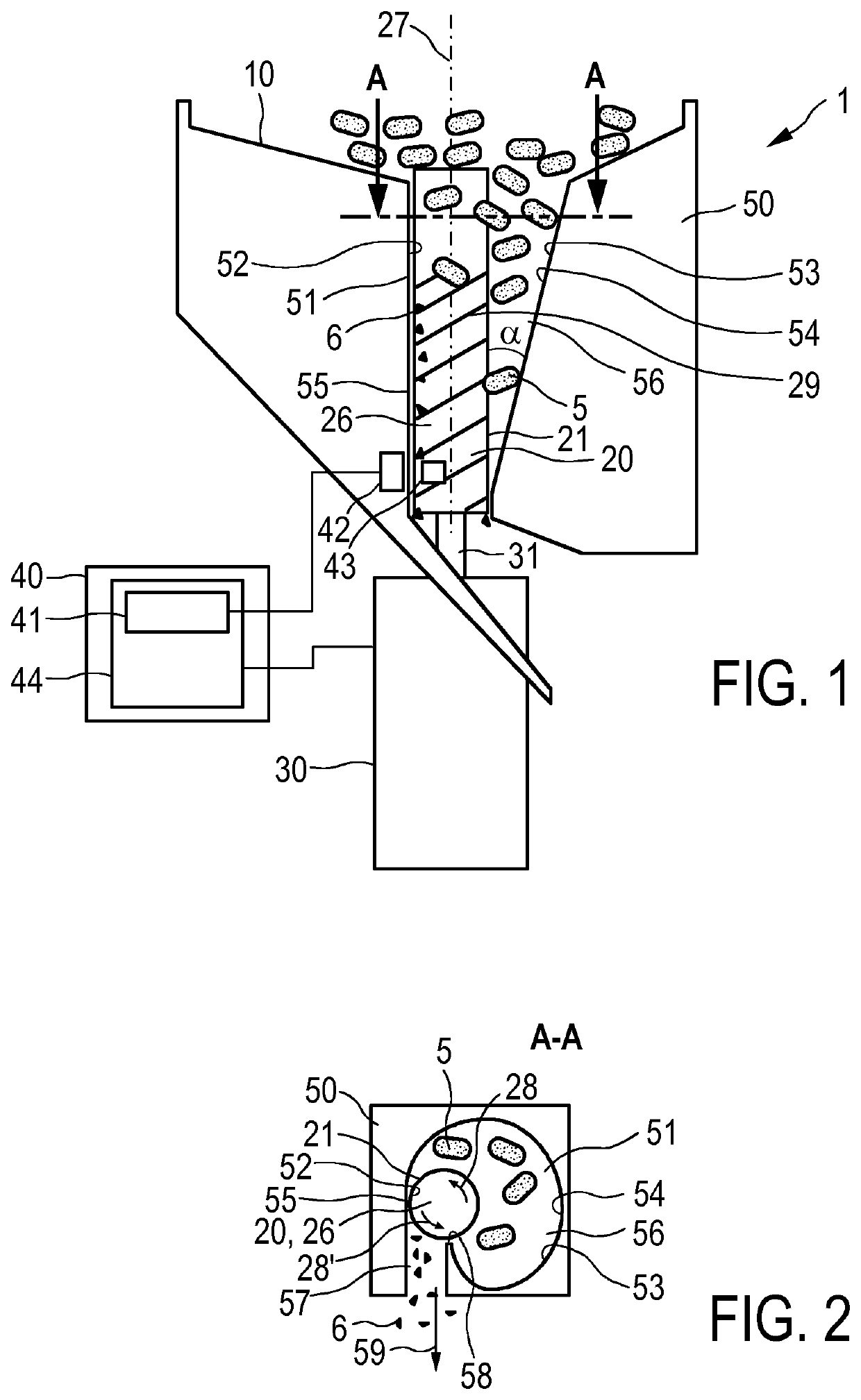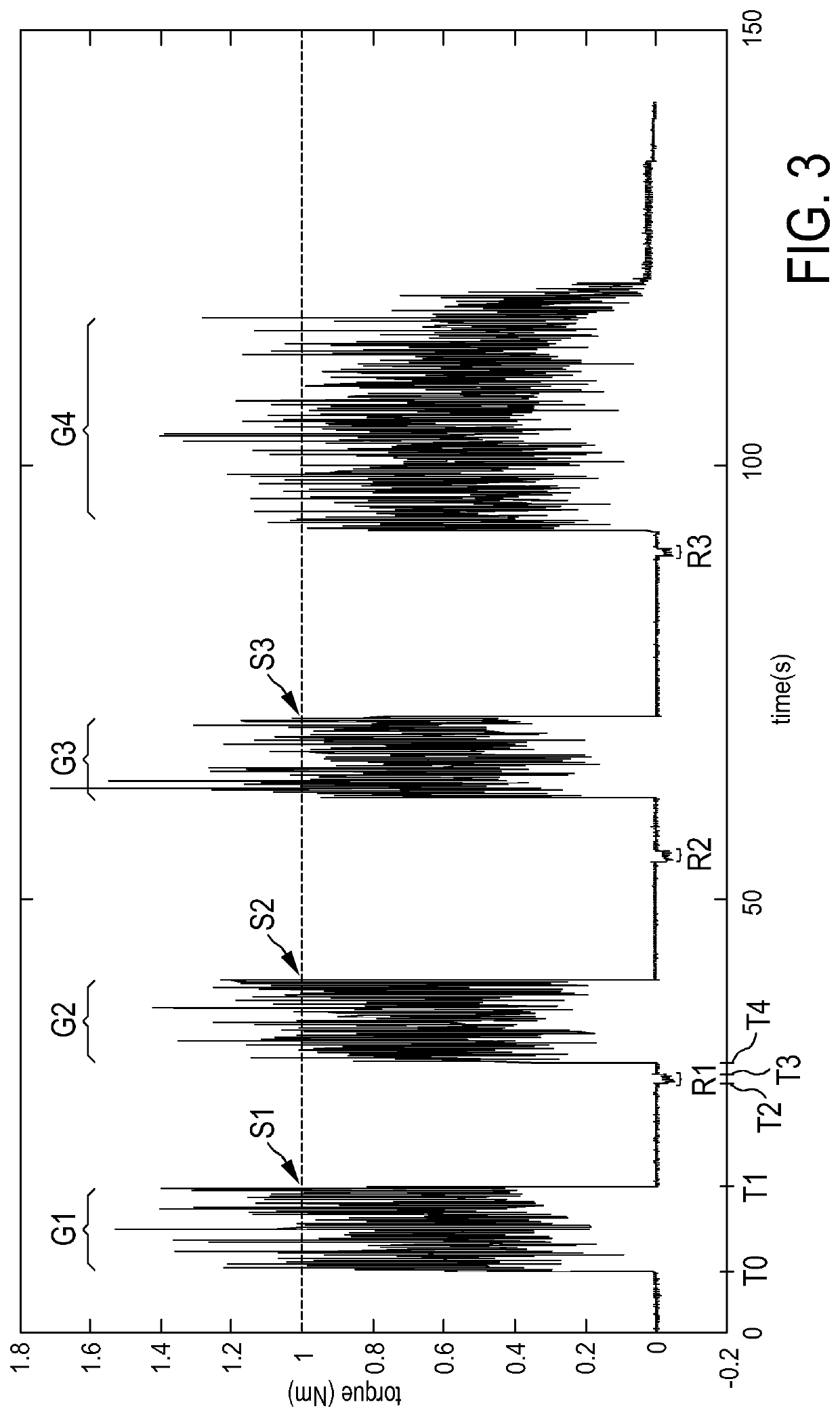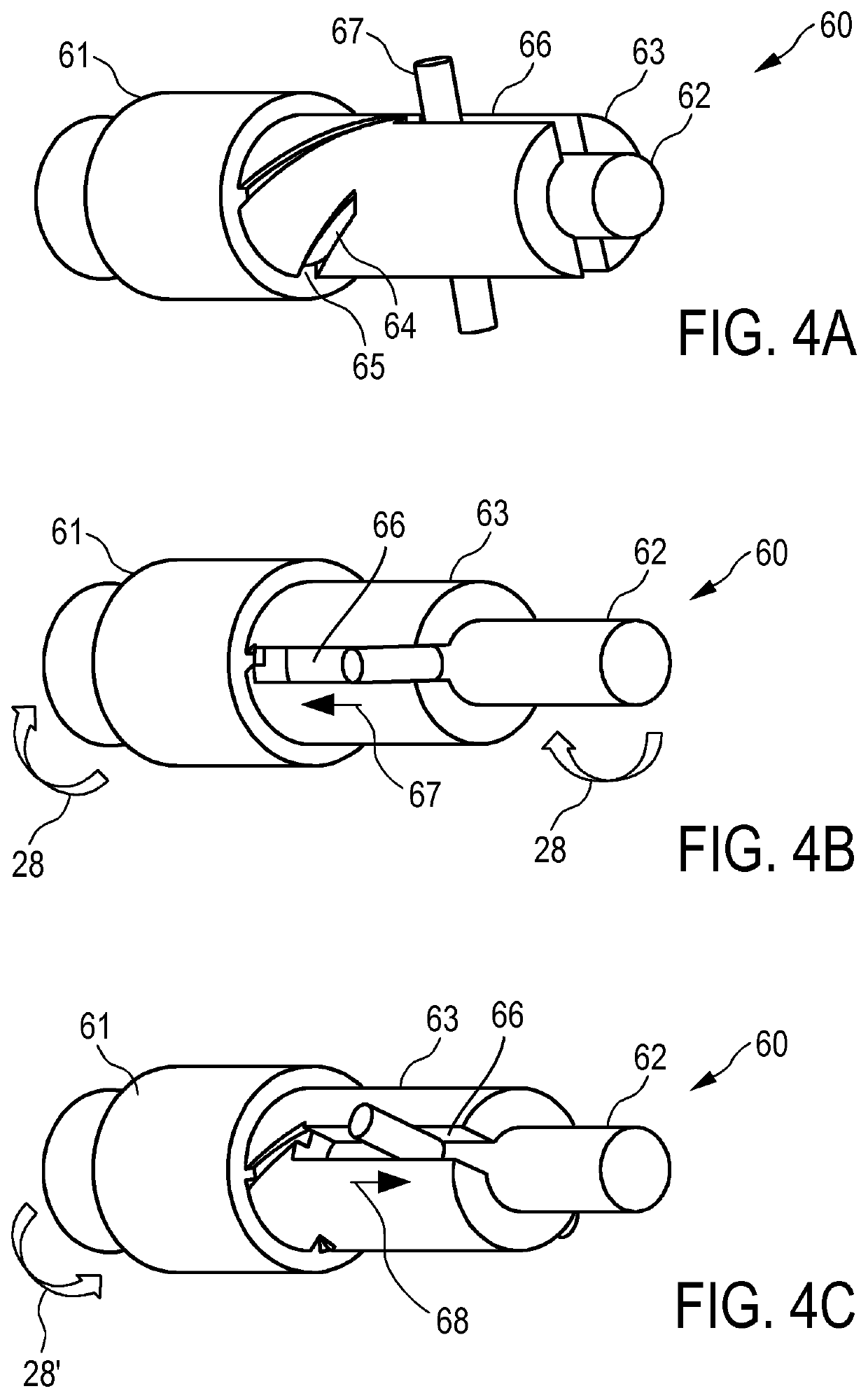Coffee grinder and coffee grinding method
a coffee grinder and coffee technology, applied in the field of coffee grinders, can solve the problems of stall condition, lack of solution, heavy power motor, etc., and achieve the effects of low cost, high rotation rate of grinding tools, and limited motor power
- Summary
- Abstract
- Description
- Claims
- Application Information
AI Technical Summary
Benefits of technology
Problems solved by technology
Method used
Image
Examples
Embodiment Construction
[0055]FIG. 1 shows an exemplary embodiment of a coffee grinder 1. The coffee grinder 1 comprises a grinding tool 20 for grinding coffee beans, a motor 30 for driving the grinding tool 20, a stall detector 41 for detecting a stall condition of the grinding tool 20 and / or of the motor 30, and a reversal unit 40 configured to temporarily reverse a direction of rotation of the grinding tool 20 and / or of the motor 30 if the stall detector 41 detects a stall condition, as the basic components.
[0056]A coffee grinder 1 is a device for grinding coffee beans 5, which are diagrammatically shown in FIG. 1 as ellipses. By grinding the coffee beans 5, coffee powder or coffee grind is formed, which is suitable to be used in a process of making coffee by allowing a quantity of water to interact with the coffee grind, so that the soluble part of the coffee grind is extracted. The coffee grinder 1 can also be fed with coarse coffee grind. The coffee grinder 1 can be an integral part of a coffee maker...
PUM
 Login to View More
Login to View More Abstract
Description
Claims
Application Information
 Login to View More
Login to View More - R&D
- Intellectual Property
- Life Sciences
- Materials
- Tech Scout
- Unparalleled Data Quality
- Higher Quality Content
- 60% Fewer Hallucinations
Browse by: Latest US Patents, China's latest patents, Technical Efficacy Thesaurus, Application Domain, Technology Topic, Popular Technical Reports.
© 2025 PatSnap. All rights reserved.Legal|Privacy policy|Modern Slavery Act Transparency Statement|Sitemap|About US| Contact US: help@patsnap.com



